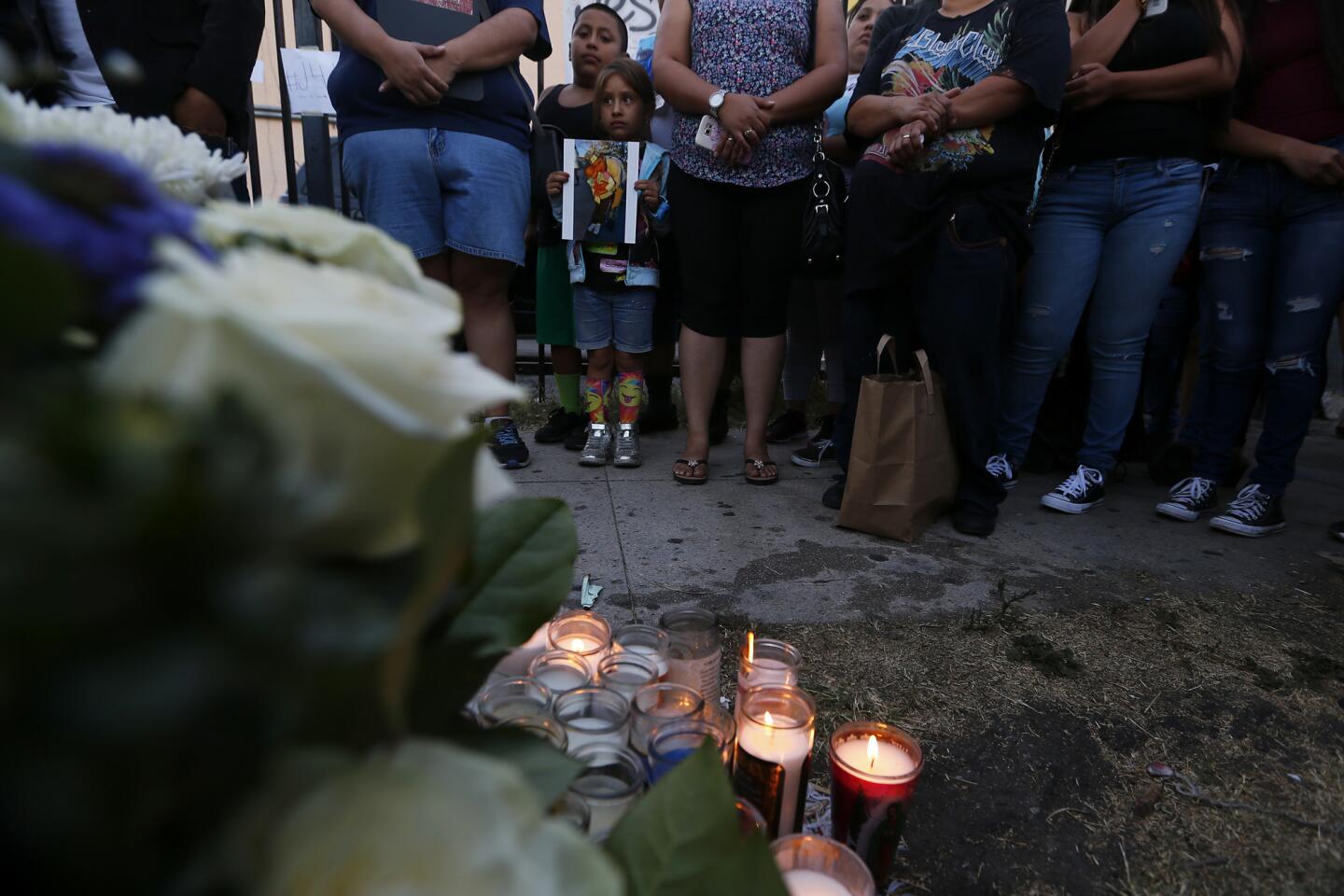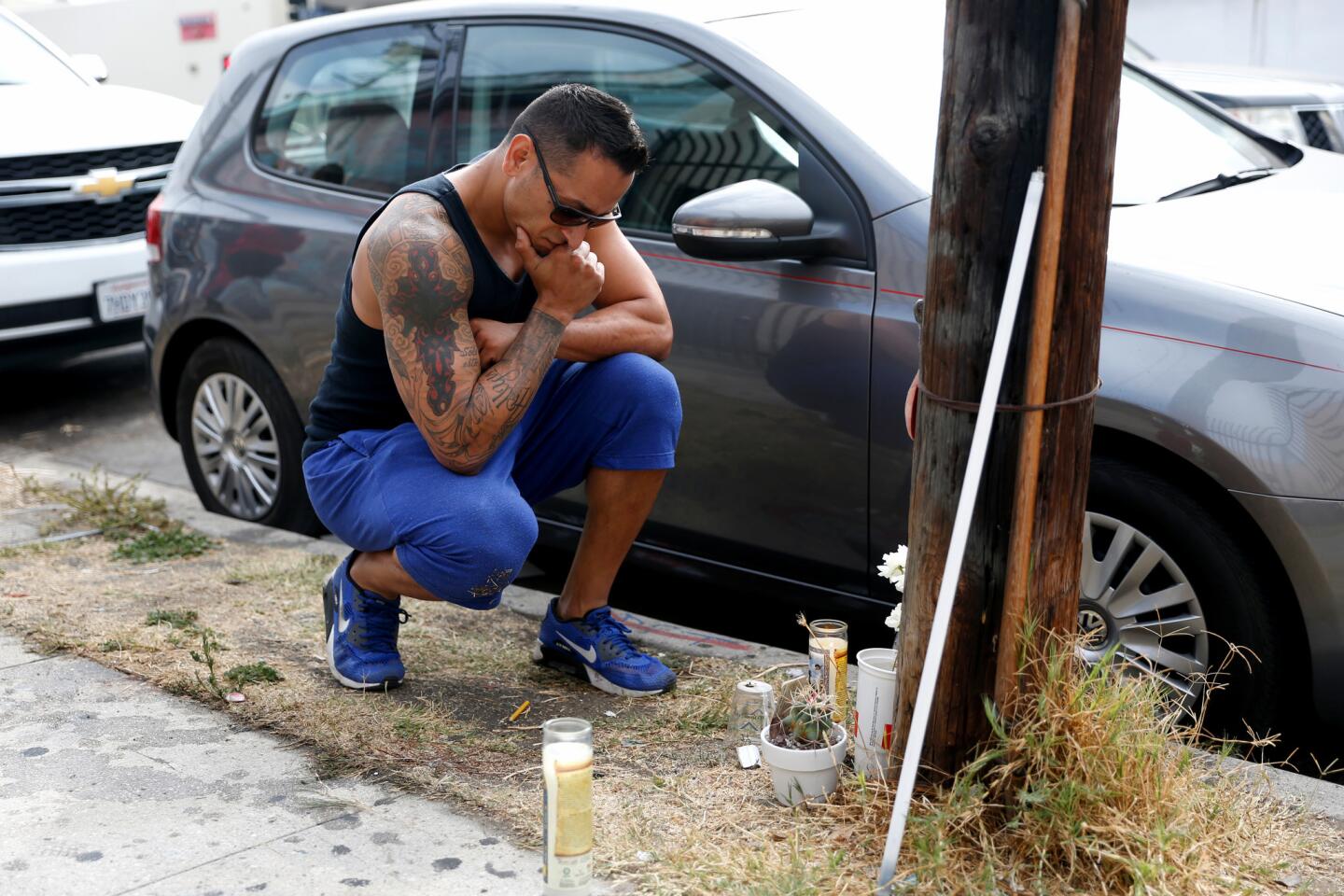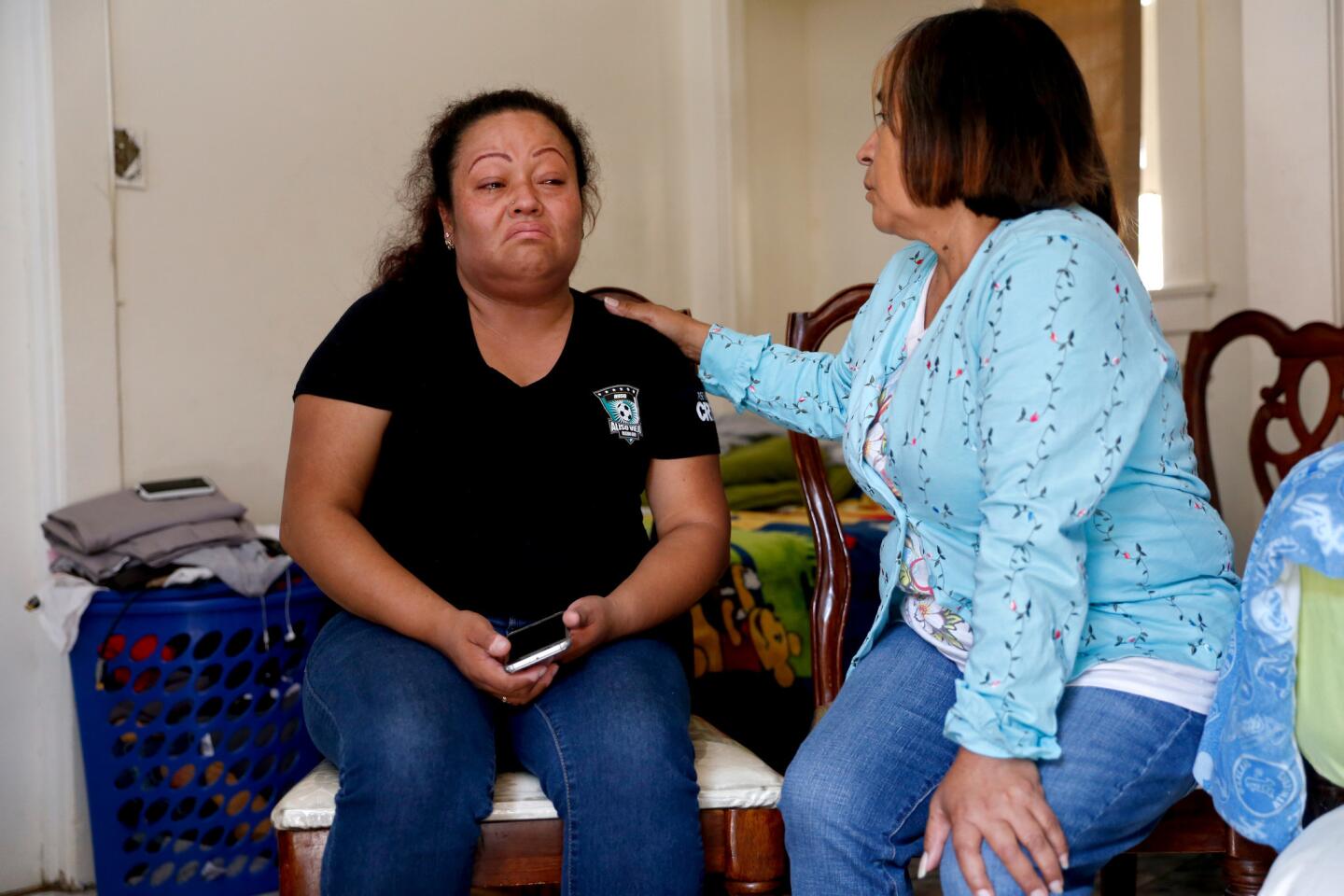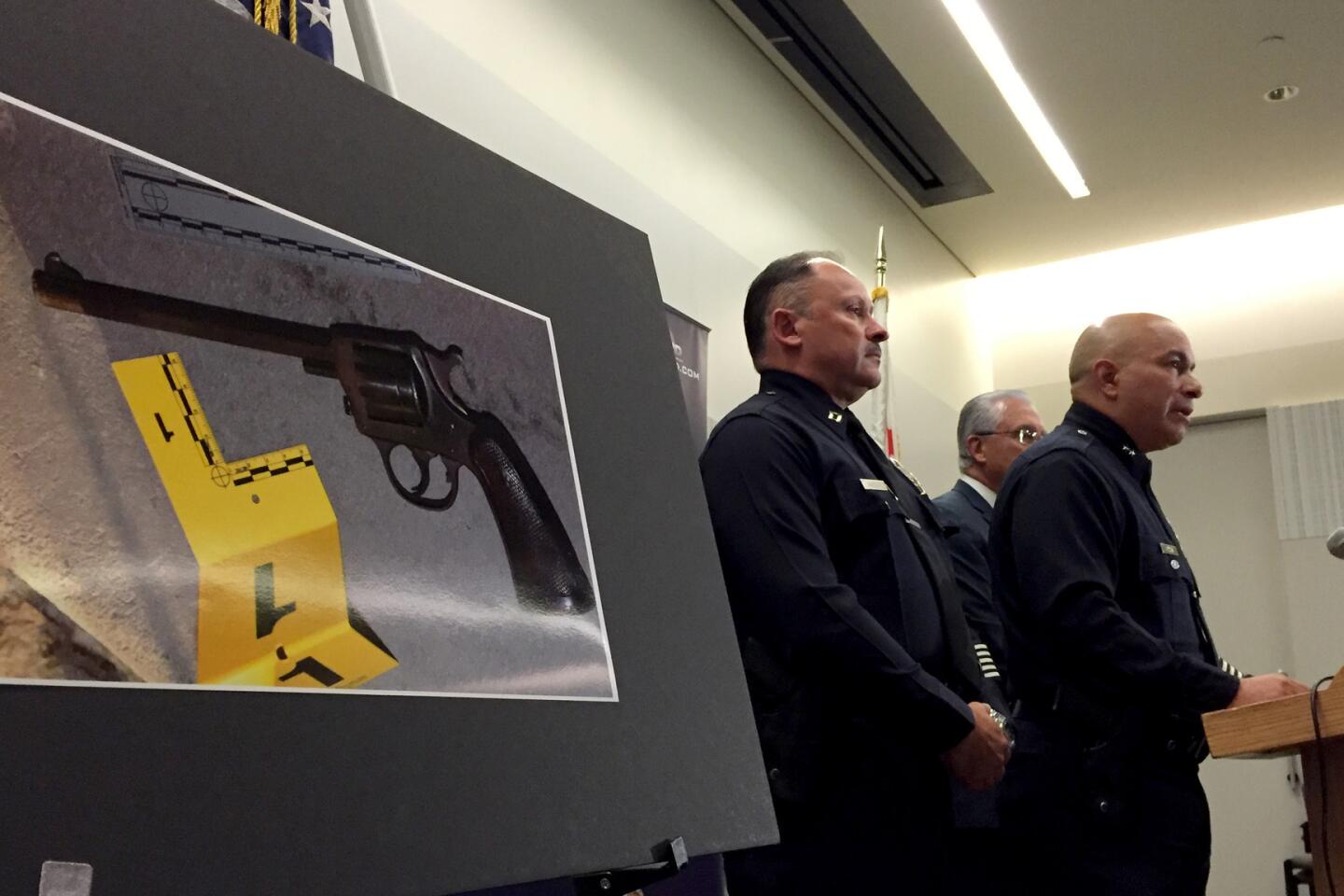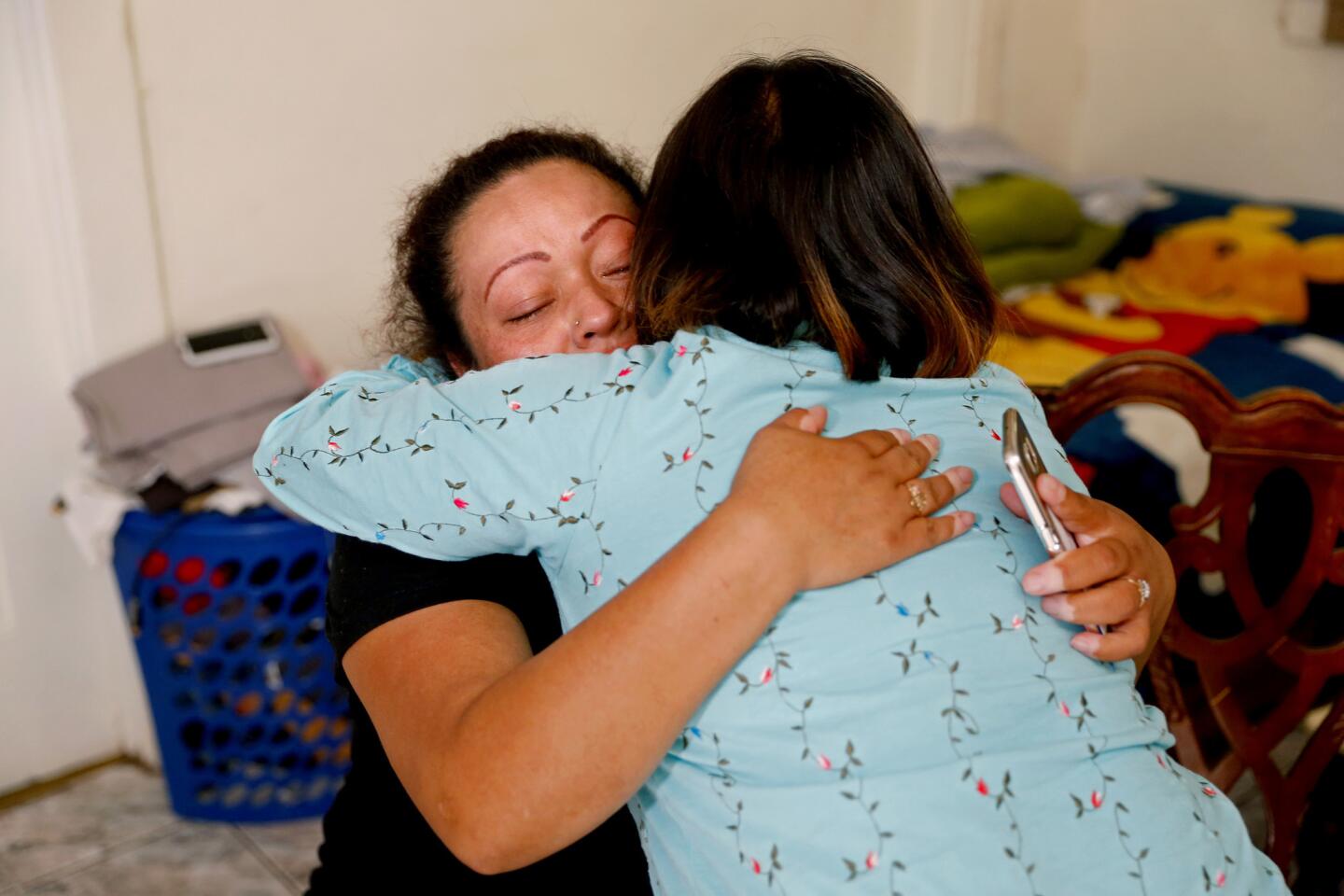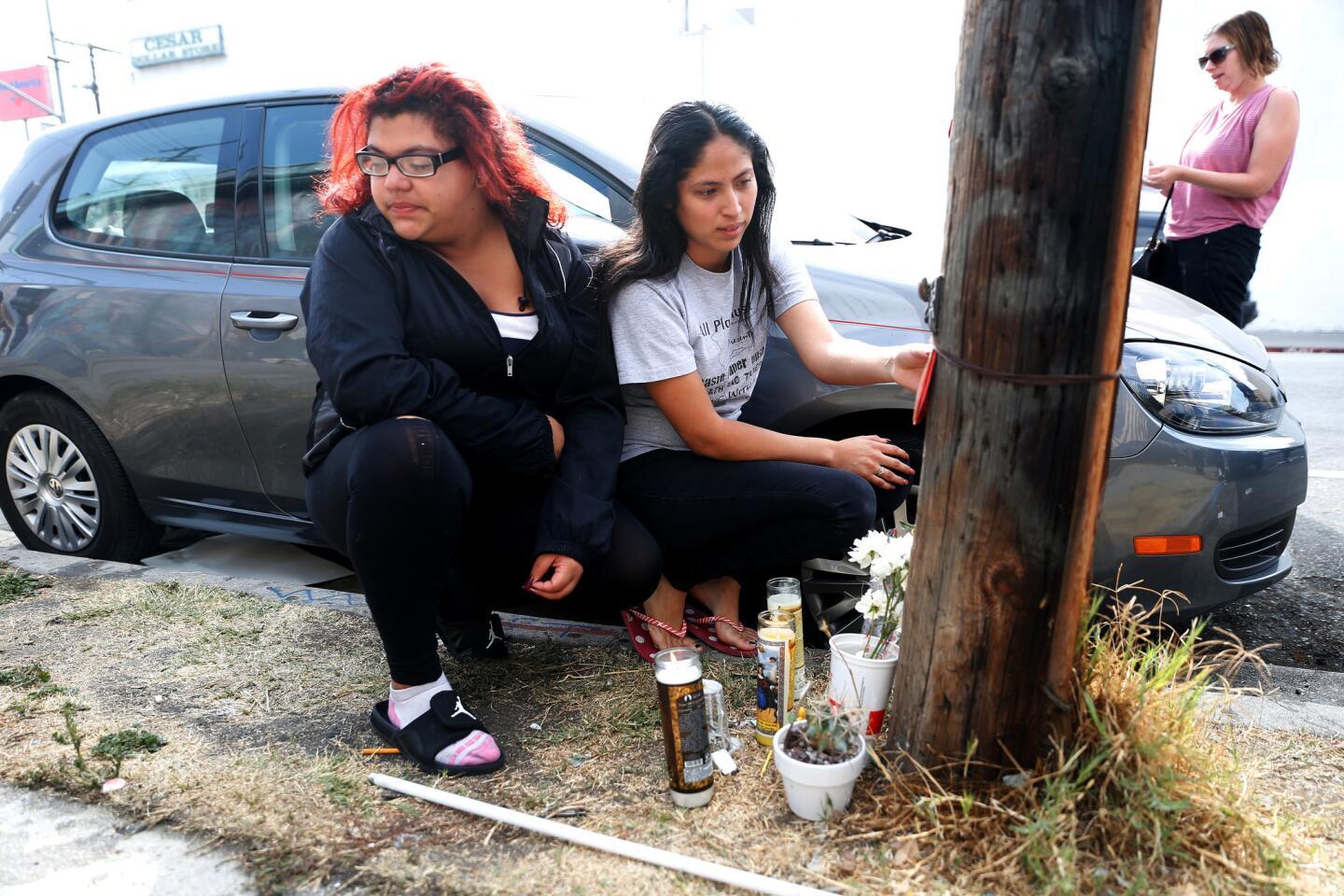LAPD officer fatally shoots two people just days apart. How quickly should officers who kill return to work?
- Share via
This summer, for the first time in his nearly five years as a Los Angeles police officer, Eden Medina shot someone.
Police say Medina opened fire July 28 as Omar Gonzalez fought with officers after a car chase ended in a Boyle Heights cul-de-sac. Police have released few details about the shooting, but said at least one witness saw the 36-year-old with a gun before Medina fatally shot him.
Twelve days later, the Hollenbeck Division gang officer fired his gun again, killing Jesse Romero two weeks shy of his 15th birthday. The Aug. 9 shooting prompted protests and criticism of the LAPD, amplified by the renewed national scrutiny over policing as well as conflicting accounts over whether Romero fired a gun at officers before he was shot.
The shootings offer a window into how the LAPD treats officers who fire their guns. While shootings by police have received much attention, they remain relatively rare events. In 2015, for example, the LAPD reported more than 1.5 million contacts between police and the public. Of those encounters, 21 ended with deadly gunfire from officers.
But it’s even more unusual for an officer to fatally shoot two people in such a short period of time.
The case raises questions about how much training and psychological help the LAPD provides officers who fire their weapons and whether they spend enough time away from the job after a deadly encounter.
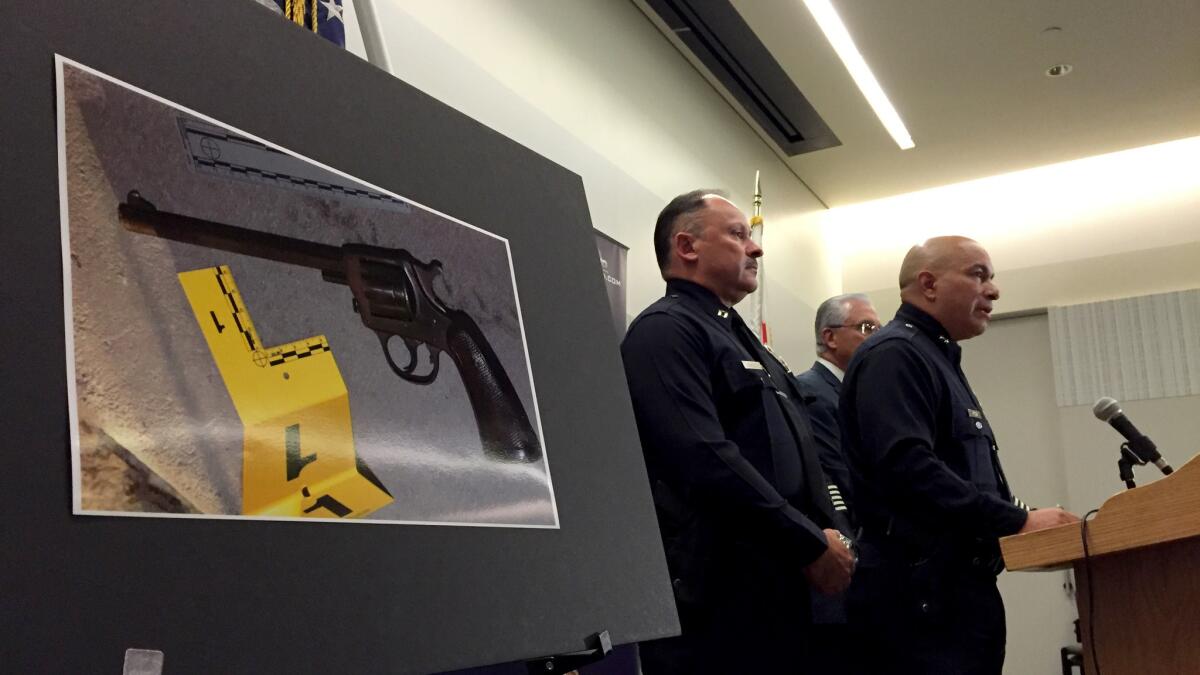
LAPD spokesman Josh Rubenstein said Medina returned to the field six days after the first shooting. The officer was cleared by a department psychologist and the police chief, he said.
“We take every single instance very seriously,” he said. “Any officer-involved shooting is tragic for the community and for the officer. It’s very difficult.”
LAPD officers typically return to the field one to two weeks after a shooting and can do so even before they complete a training refresher course that usually lasts between 30 minutes and an hour, according to a recent report by the Police Commission’s inspector general.
It is unclear whether Medina finished that training before returning to work. Rubenstein declined to comment, saying it was part of the officer’s personnel file.
Police officers in Washington, D.C., and Dallas typically don’t return to their full duties for almost a month after a shooting, according to the inspector general’s report. Officers in Las Vegas spend as long as two or three months out of the field. Dallas and Las Vegas also send officers to a full day of individualized training before they’re back on the job.
Earlier this month, the civilian commission that oversees the LAPD directed the department to expand training for officers after they fire their guns and ensure they complete that training before returning to the field.
Matt Johnson, the commission’s president, told department brass he was concerned that LAPD officers generally spend less time off patrol after shootings than police at other agencies. Johnson also said he believed officers should be required to attend more than one session with a psychologist.
“These are traumatic events, and one mandatory session does not seem adequate to me,” he said. “Someone could have a great session and frankly, pull the wool over your eyes, and you don’t see the trauma that they’re going through.”
When is it OK for police to shoot? Depends on if you’re asking a cop or a civilian »
Rubenstein, the LAPD spokesman, said the department is willing to take another look at that approach as part of its broader review of how officers use force.
A lawyer representing Romero’s mother accused the LAPD of showing “complete gross negligence” by sending Medina back to the field within a week of the first shooting. Whether or not the officer was justified in firing his gun, attorney Humberto Guizar said, he should have spent more time away as a “cooling down” period.
“I have friends who are police officers — they worked for 35 years and they never shot a civilian,” Guizar said. “This is an officer who killed somebody 12 days before he killed our kid. How could that happen?”
Medina’s attorney insisted there was no connection between the two shootings, saying the officer reacted reasonably based on the circumstances of each situation. Both Gonzalez and Romero had a gun, attorney Larry Hanna noted. The timing, he added, was “just a coincidence.”
Hanna described Medina as a hard-working cop who, as a gang officer, worked a difficult assignment in a tough neighborhood.
“Being in one shooting was very hard on this officer. Being in two? It’s hard on them,” Hanna said. “They don’t want to be out there having to do this. They also don’t want people pointing guns at them.”
The LAPD puts officers through a “rigorous process” before returning them to work after a shooting, Hanna said. “This officer was ready,” he said.

Most law enforcement officers spend their entire careers without firing their guns in the line of duty. How departments treat officers who do, however, varies from agency to agency.
LAPD officers must meet with a psychologist within a week of firing their guns. Officers must be cleared by a psychologist before the chief decides whether they can return to work, though the psychologist may require officers to attend additional counseling sessions after they’re back on the job. Officers may request extra meetings.
Officers also receive what’s called a general training update — a refresher course that includes a review of the LAPD’s policy for using deadly force and time in a simulator where officers react to various real-life scenarios that could lead to using that deadly force.
Police in Dallas, however, must attend three mental health evaluations after a shooting — a week, three months and six months later. Las Vegas officers are required to attend at least two sessions and are then evaluated by a board of department officials before an undersheriff signs off on returning that officer to the field.
Los Angeles County sheriff’s deputies who are involved in shootings — whether they pulled the trigger or not — must check in with a psychologist within days, then again two weeks and four months later, sheriff’s officials said. They generally return to work between a week and 10 days after a shooting.
Lou Turriaga, a director for the union that represents the LAPD’s rank and file, said he believed the department offered strong support for officers after shootings. It’s rare for police to fire their guns in the line of duty, he noted — Turriaga said he hasn’t during his 28 years as an LAPD officer — and each officer who does reacts differently.
“I’ve been out to shootings and you can see it in their eyes. Some of them, it’s not a problem,” he said. “Others look like a deer in headlights.”
On-duty LAPD officers have fatally shot 16 people this year, according to a Times analysis. Five of those shootings happened in Boyle Heights, including one where an LAPD officer was shot in the arm.
Conflicting accounts have emerged about the events that led up to Medina’s second shooting. The LAPD has said a witness told investigations that Romero fired a revolver at police after they chased him down the street. An officer then saw Romero crouched on the sidewalk, his arm extended. Fearing Romero was going to shoot, police said, Medina fired.
A woman who said she saw the shooting, however, told The Times she saw Romero throw the gun toward a fence. She said she heard the weapon fire when it hit the ground.
Medina is currently working an investigative assignment, the LAPD said. He hasn’t returned to the field since the second shooting. The department spokesman declined to say why, citing the ongoing inquiry and laws protecting a police officer’s personnel record.
Follow me on Twitter: @katemather
ALSO
Gun and video may provide answers in Jesse Romero shooting, police say
LAPD honors officers for their bravery and, for the first time, their restraint
More to Read
Sign up for Essential California
The most important California stories and recommendations in your inbox every morning.
You may occasionally receive promotional content from the Los Angeles Times.


